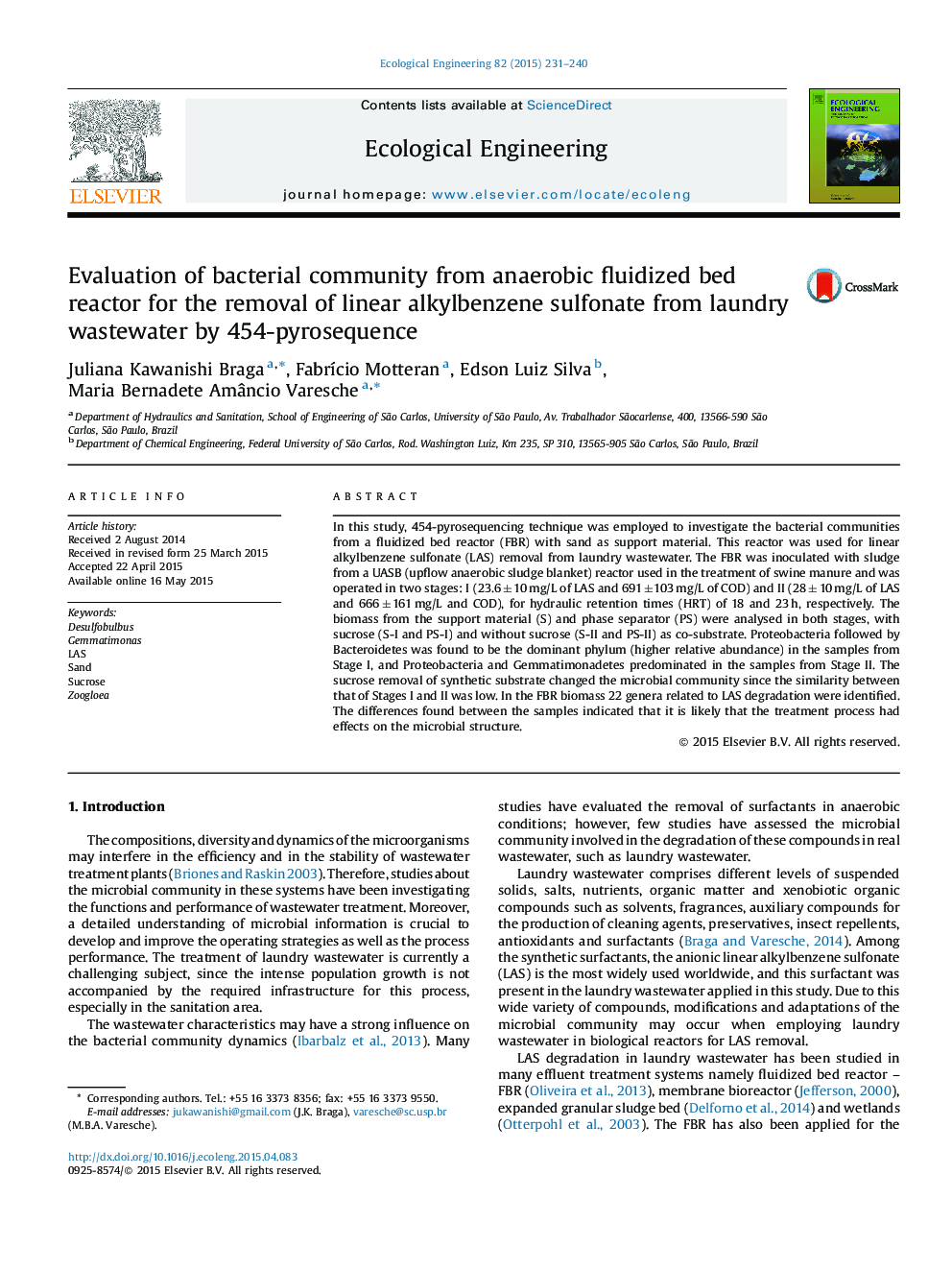| کد مقاله | کد نشریه | سال انتشار | مقاله انگلیسی | نسخه تمام متن |
|---|---|---|---|---|
| 4388967 | 1618017 | 2015 | 10 صفحه PDF | دانلود رایگان |
• Four samples from a fluidized bed reactor were investigated by 454-pyrosequencing.
• The structure of bacterial community was represented by 92 identified genera.
• Most of the genera identified were related to the degradation of aromatic compounds.
• The sucrose influenced the microbial community.
ABSTRACTIn this study, 454-pyrosequencing technique was employed to investigate the bacterial communities from a fluidized bed reactor (FBR) with sand as support material. This reactor was used for linear alkylbenzene sulfonate (LAS) removal from laundry wastewater. The FBR was inoculated with sludge from a UASB (upflow anaerobic sludge blanket) reactor used in the treatment of swine manure and was operated in two stages: I (23.6 ± 10 mg/L of LAS and 691 ± 103 mg/L of COD) and II (28 ± 10 mg/L of LAS and 666 ± 161 mg/L and COD), for hydraulic retention times (HRT) of 18 and 23 h, respectively. The biomass from the support material (S) and phase separator (PS) were analysed in both stages, with sucrose (S-I and PS-I) and without sucrose (S-II and PS-II) as co-substrate. Proteobacteria followed by Bacteroidetes was found to be the dominant phylum (higher relative abundance) in the samples from Stage I, and Proteobacteria and Gemmatimonadetes predominated in the samples from Stage II. The sucrose removal of synthetic substrate changed the microbial community since the similarity between that of Stages I and II was low. In the FBR biomass 22 genera related to LAS degradation were identified. The differences found between the samples indicated that it is likely that the treatment process had effects on the microbial structure.
Journal: Ecological Engineering - Volume 82, September 2015, Pages 231–240
